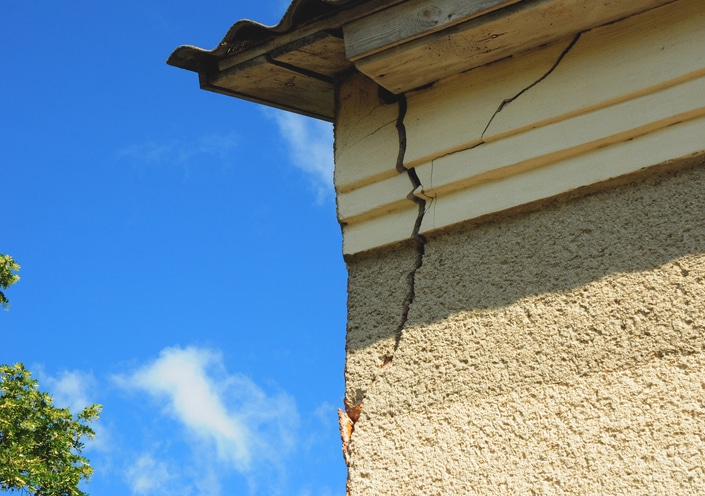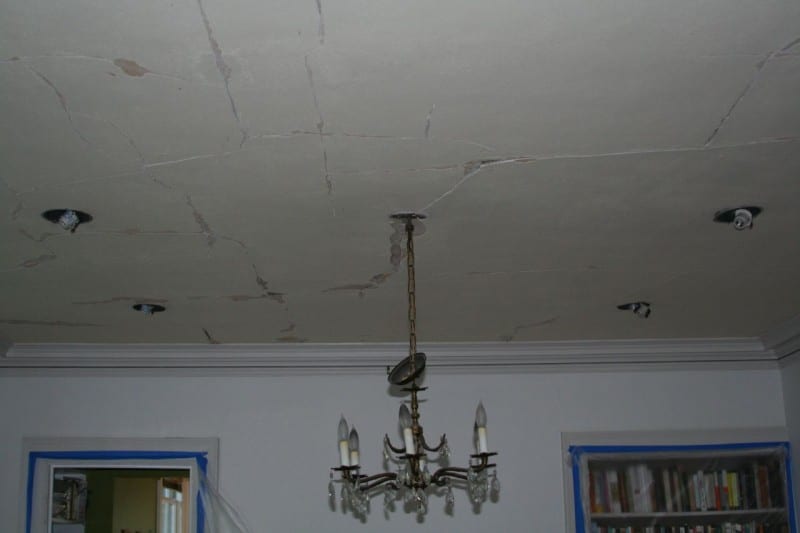Foundation problems can damage your roof in three ways:
- By forcing the ridgeline to curve.
- By pushing beams out of place.
- By creating gaps between shingles or other roofing materials.
Repairs to your roof may seem to fix the issue temporarily, but without addressing the foundation, the damage will return.
If your home shows signs of uneven settling or shifting that’s affecting your roof, contact our foundation repair services company today for a free inspection and to have your questions answered by our friendly professionals. For now, let’s take a closer look at how roof problems and foundation problems are connected.
Where Your Foundation Goes, the Rest of Your Home Will Follow
Foundation problems can cause trouble throughout your house, not just the parts that are underground. To understand why, consider that modern houses are held together by tightly connected wooden frames. The frame is supported by the foundation, which is held up by the earth itself. It only takes one weak link to create problems throughout the entire system.
A lot of things can damage your home’s foundation. These include:
- Soil contraction – here in North Texas, the fierce heat of the summer sun can cause the earth around your home to expand and contract. This creates “push and pull” pressure on the foundation that weakens its structure over time.
- Thermal expansion – the sun has a similar effect on the foundation itself, which soaks up solar heat during the day and releases it at night.
- Root growth – underground roots from nearby trees and large bushes can literally poke holes in your foundation. Roots also contribute to moisture evaporation.
- Normal settling – the average home can weigh anywhere from 100,000 to 200,000 pounds. All that weight puts constant pressure on your foundation, forcing it deeper into the ground while bending it out of shape.
Because every part of your home is interconnected, these issues can spread throughout the frame and eventually affect the roof, too. When that happens, you may notice any or all of the following problems:
- A groaning or creaking sound coming from your attic.
- Gaps or cracks in the wooden decking beneath your roof’s exterior.
- Loose or missing shingles.
- Bent or damaged roofing panels (in the case of a metal roof).
For all these reasons, it’s a good idea to have a qualified Dallas-Fort Worth interior foundation repair contractor perform an inspection, no matter what kind of home problems you’re having. Otherwise, you could sink a lot of money into costly repairs without addressing the underlying cause.
We’re Foundation Repair Experts, Not Roofers
While roof problems can be a symptom of foundation movement, Align Foundation Repair focuses exclusively on diagnosing and repairing the underlying foundation issues that cause these symptoms. If you suspect roof damage is due to foundation shifting, start with a foundation inspection before contacting a roofing contractor.
Here at Align Foundation Repair, we serve the people of North Texas by providing quality service at affordable prices. Our work is guaranteed and we’re happy to furnish references from past customers.
The sooner you act, the sooner your home problems will be in the past. Contact our North Texas foundation repair experts today to schedule your free, no-obligation inspection and estimate.





